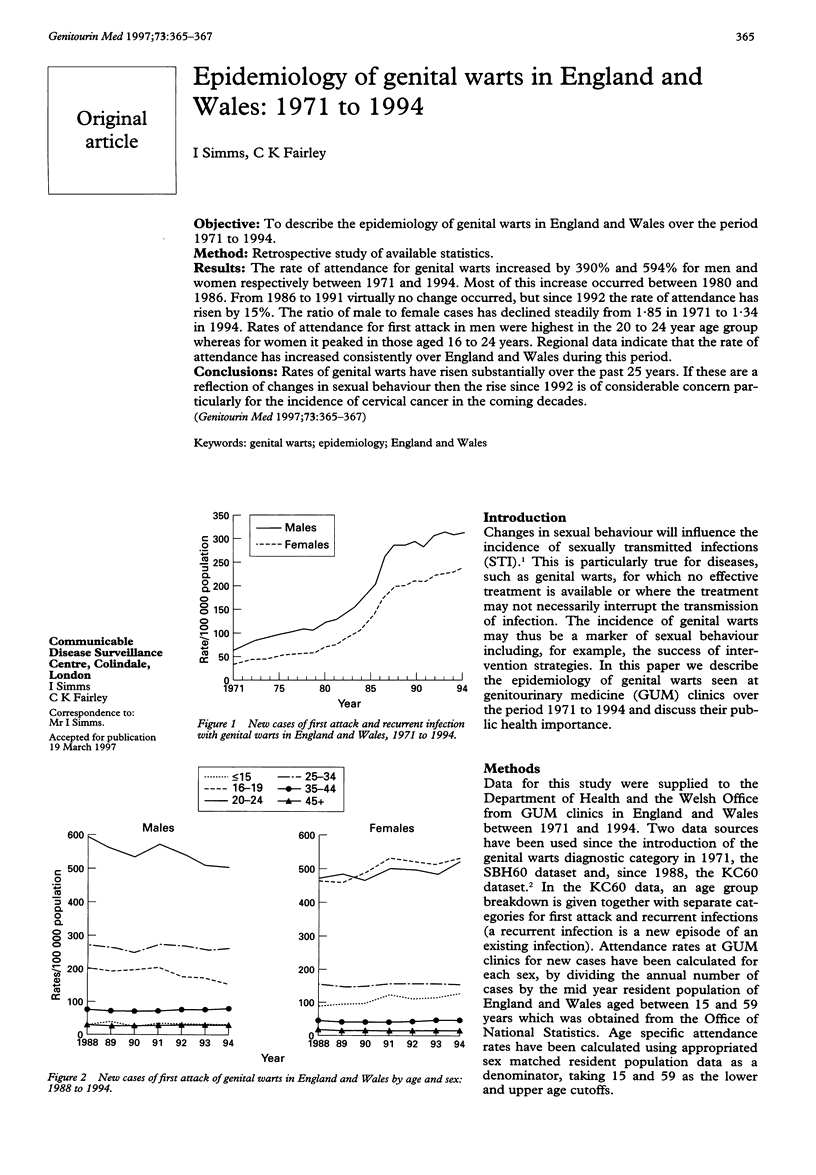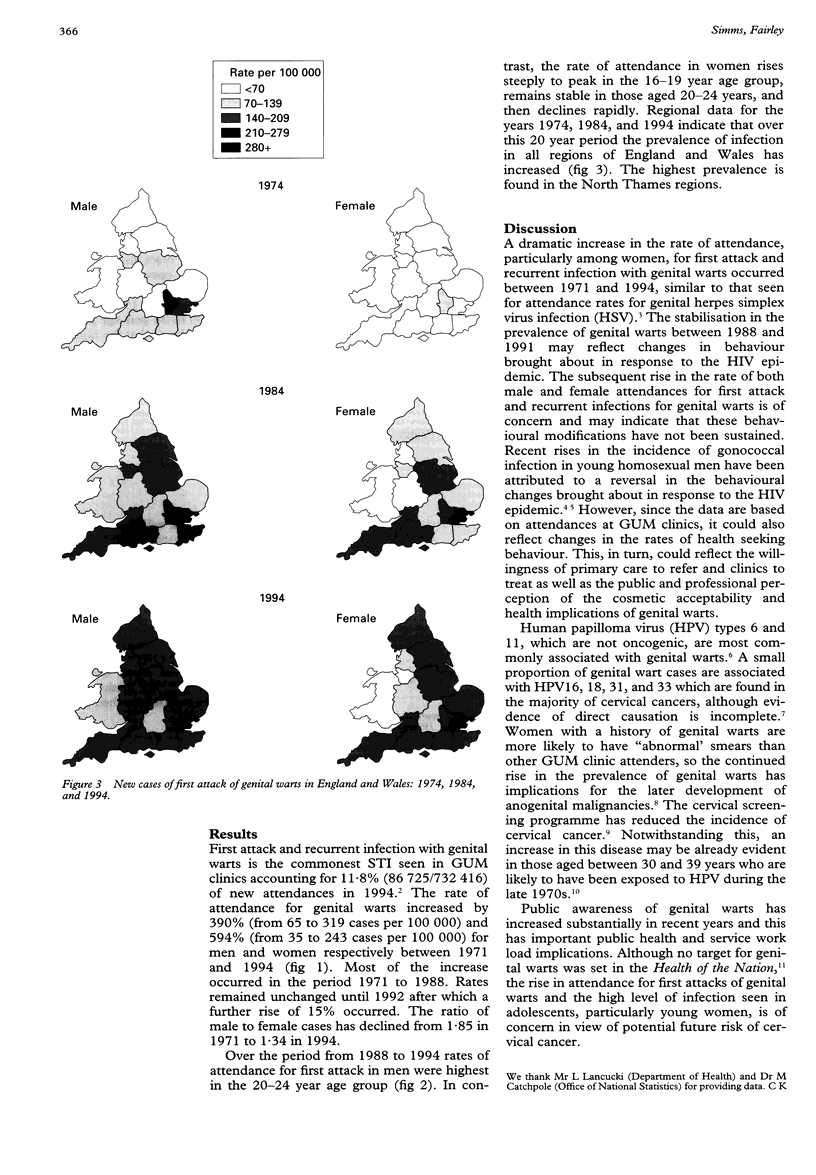Abstract
OBJECTIVE: To describe the epidemiology of genital warts in England and Wales over the period 1971 to 1994. METHOD: Retrospective study of available statistics. RESULTS: The rate of attendance for genital warts increased by 390% and 594% for men and women respectively between 1971 and 1994. Most of this increase occurred between 1980 and 1986. From 1986 to 1991 virtually no change occurred, but since 1992 the rate of attendance has risen by 15%. The ratio of male to female cases has declined steadily from 1.85 in 1971 to 1.34 in 1994. Rates of attendance for first attack in men were highest in the 20 to 24 year age group whereas for women it peaked in those aged 16 to 24 years. Regional data indicate that the rate of attendance has increased consistently over England and Wales during this period. CONCLUSIONS: Rates of genital warts have risen substantially over the past 25 years. If these are a reflection of changes in sexual behaviour then the rise since 1992 is of considerable concern particularly for the incidence of cervical cancer in the coming decades.
Full text
PDF


Selected References
These references are in PubMed. This may not be the complete list of references from this article.
- Evans B. G., Catchpole M. A., Heptonstall J., Mortimer J. Y., McCarrigle C. A., Nicoll A. G., Waight P., Gill O. N., Swan A. V. Sexually transmitted diseases and HIV-1 infection among homosexual men in England and Wales. BMJ. 1993 Feb 13;306(6875):426–428. doi: 10.1136/bmj.306.6875.426. [DOI] [PMC free article] [PubMed] [Google Scholar]
- Sasieni P., Cuzick J., Farmery E. Accelerated decline in cervical cancer mortality in England and Wales. Lancet. 1995 Dec 9;346(8989):1566–1567. doi: 10.1016/s0140-6736(95)92099-4. [DOI] [PubMed] [Google Scholar]
- Schiffman M. H., Bauer H. M., Hoover R. N., Glass A. G., Cadell D. M., Rush B. B., Scott D. R., Sherman M. E., Kurman R. J., Wacholder S. Epidemiologic evidence showing that human papillomavirus infection causes most cervical intraepithelial neoplasia. J Natl Cancer Inst. 1993 Jun 16;85(12):958–964. doi: 10.1093/jnci/85.12.958. [DOI] [PubMed] [Google Scholar]
- de Villiers E. M. Human pathogenic papillomavirus types: an update. Curr Top Microbiol Immunol. 1994;186:1–12. doi: 10.1007/978-3-642-78487-3_1. [DOI] [PubMed] [Google Scholar]


